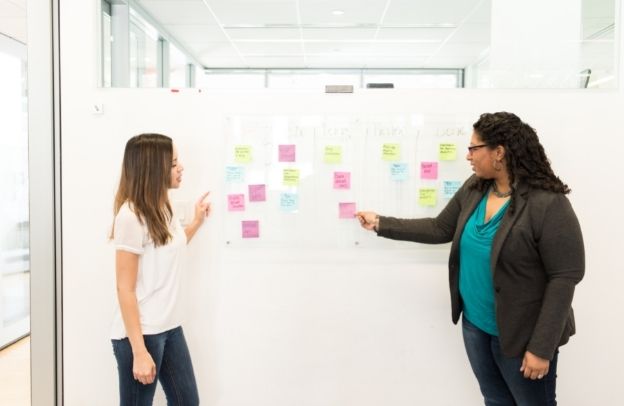How To Optimize Content For Your Audience

Do you want to learn how to optimize your content for your audience? Then pay attention to what we are going to discuss in this article. There are many ways to optimize your content for your audience. This article will cover the basics of optimizing for SEO, and help you understand Header Tags, keywords, and the right optimization for conversion.
Want to learn about Content Creation Strategy? Then, join AClasses Content Academy.
Related articles on the content optimization series
- Content Optimization Basics: The Beginner’s Guide
- The Importance Of Content Optimization For Beginners
- How To Optimize Content For Your Audience
Some people think that content marketing is just about generating a lot of content and publishing it all over the place. That is not true and we do not encourage that in Content Academy. We encourage our students to properly optimize their content so they can get good results.
To be successful, you need to optimize all of your content so that it reaches the right audience and converts them into paying customers.
Ways to optimize your content for your audience
To start with, make sure your content is relevant to your audience. By that I mean make sure that you are targeting them with what they want and need from you.
Content optimization has changed drastically in recent years. In the past, it was enough to have a presence on search engines and include the right metadata to rank well for keywords. You can learn more by checking out our previous article, Content Optimization Basics: The Beginner’s Guide
Over time, social media and mobile devices have changed the way we access new information. Now content optimization is more about:
- Building trust,
- Establishing intent,
- Delivering quality,
- And earning authority.
For example, this article has been created to help you understand how to find the perfect balance between optimizing your content for search engines and optimizing it for the people who will be reading it. That is probably why it appears to you and you are now reading it.
All you need to do now is repeat the same process for your clients by providing a solution to their needs and optimizing the content so they can find it.
Target the right keywords for your content
This is more like the previous discussion – Optimizing your content for your audience. The first step is to find the right keywords most relevant to your website. Use tools like Google AdWords to find keywords that are popular in your industry, in your specific niche, and that have a high search volume.
Now, it’s time to create content for these keywords. You should write content that is both useful and relevant to the reader’s needs. You can use some helpful SEO tactics like synonyms and related words in your content so you can rank higher on Google searches.
Your content is only as good as your keywords. The right keyword research provides the best way to find the right keywords for your posts or articles.
It’s important to identify what people are searching for and then use those same words in your content so that you can be found by potential readers and customers.
Before you can write any kind of content, you have to come up with a plan for the article.
- What are you going to cover and why?
- What is the point of your article?
Keep that in mind when developing your title and headings and you are on your way to better optimizing your content with the right keywords and audience target.
Another thing to consider for content optimization is the use of visual elements in your content. Now, let’s check it out.
Use visual elements in your content
Visual elements like infographics are a great way to share information and make it easy to understand and digest. They can be a fun way to represent data interestingly.
Infographics are also an easy way to share content on social media platforms, such as Facebook or Twitter.
A visual element is a graphic or an object that is used to enrich the content of a webpage. A picture can tell a thousand words and create emotions in the readers’ minds.
They are an excellent way to break up the text, add emphasis, and share a message with your audience.
Create simple URLs and make them easily understandable
A URL (Uniform Resource Locator) is a web address that specifies the location of a file or a web page on the internet.
The URL of your pages plays a key role in content optimization and marketing. It impacts how many people find your article and it has a direct impact on SEO. A URL should be understandable for both humans and search engines.
For that reason, you should consider using a clean, search engine-friendly URL structure with the target keyword(s) included in the URL.
As a good practice, the URL should be short and, just by glancing at the URL, your visitors and search engines should understand what your content is about. This can increase click-through rates (CTRs) and improve your SEO rankings.
It’s frustrating to have to type out a web address into your phone, or worse yet, get it wrong and end up on a spammy website. It’s also not as nice to have long URLs getting in the way of your Twitter posts.
These days, you can’t even sneeze without creating a web address. And if you are going to be generating new web addresses all day long, it’s a good idea to make them as short as possible. Make it simple.
Understand the correct usage of header tags in your content
Header tags are used to identify the content of a web page. They are used to categorize the content and provide information about the content.
- H1 – This is where your title is usually printed as – it indicates the primary heading on a webpage.
- H2 – this is usually for your sub-headings – it defines the second level in the hierarchy of your webpage.
- H3 – Following the same hierarchy, H3 is used under H2 and H4 under H3 in the same order up to H6.
This is how the webpage is structured and you must follow the steps if you want to properly optimize your pages.
Remember to link to relevant sources in your posts
Internal linking is more important in creating content than you think. It helps both users and search engines to find related subtopics to read. And it is great if is all within your website.
The ability to create an easily navigable website is an essential part of your content creation and optimization. One way to do this is through internal linking, which will help users navigate to relevant subtopics and so help improve your SEO rankings.
In most cases, you will want to use relevant target keywords in the anchor text to interlink the pages within your site. This will help in keeping visitors on your website.
If you want readers to focus their attention on a particular part of your blog post, you should use strategies like highlighting or bolding that section with a different color or font size.
Key takeaways on how to optimize content for your audience
As a content creator, you are, in most cases, responsible for both the creation and distribution of your content. And while it’s important to create something that will resonate with your audience, it’s also important to make sure that the content is optimized for search engines.
The first thing to do before writing any content is to research the keywords. This step should be done before you start writing because it can help you identify what keywords or phrases readers will use when searching for your topic online.
Secondly, after finishing a piece of content, take time to read through it and fix any typos or mistakes.
Then run it through an SEO tool like Yoast or Google Search Console and see how well-optimized your work is for search engines. You can also use these tools to find out how many times a keyword is used in your content.
Sure, there is more to content optimization but what we have discussed in this post can set you up for success if you pay attention to the points.
If you find any value in this post, share also with your friends who might need it. AClasses Content Academy if you want to learn about Storytelling Skills and Content Creation Strategy.




2 Comments